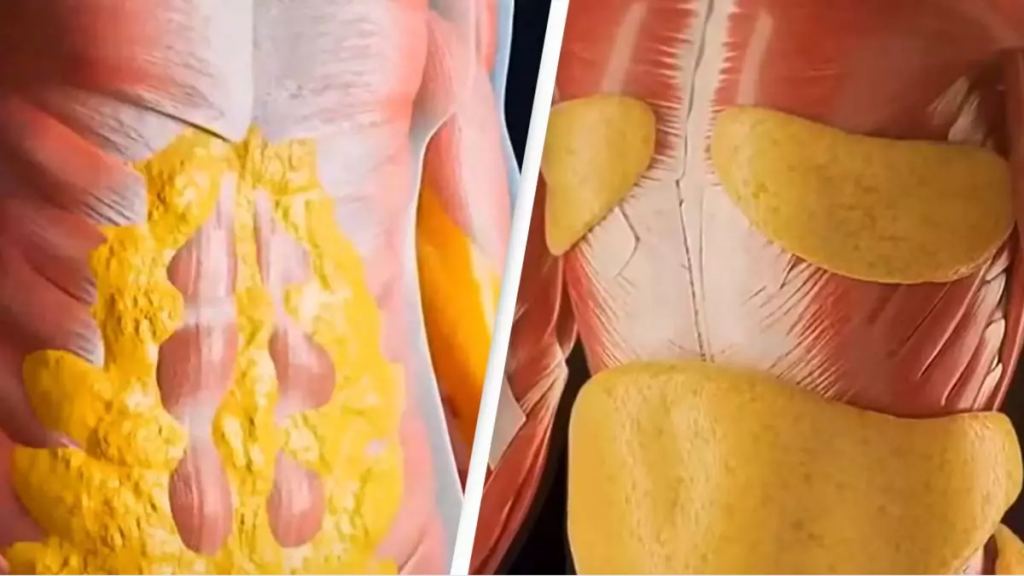It starts as a subtle emptiness. Not just in your stomach — but in your entire body. For millions experimenting with extended fasting, what follows is a transformation that’s both physical and psychological. Now, a detailed simulation from health researchers has visualized what really happens during a 36-hour fast, and the results are more extreme — and revealing — than most realize.
According to a viral breakdown published by UNILAD, the simulation uses real-time biomarker tracking to chart your body’s descent from hunger to a near-primal survival state. Within four hours of your last meal, insulin levels begin to plummet. “The drop is almost immediate,” explains Dr. Amanda Kersey, a fasting researcher at Mayo Clinic. “And it signals your body to start shifting gears — from fed mode to fasted metabolism.”

By hour eight, glycogen — the sugar stored in your liver and muscles — becomes your main fuel. This is when mild irritability sets in for many, a phenomenon often dubbed being ‘hangry’. “You’re still functioning,” says Dr. Kersey, “but your energy reserves are limited. Think of it as driving your car on battery backup.”
The simulation, which garnered over 3 million views on YouTube in under a week, shows a major metabolic shift at hour 12. That’s when your body enters ketosis, a state where fat becomes your primary fuel. It’s a biological safety net — and the start of profound changes. “Now your liver is converting fat into ketones,” said Dr. Sean Rowe from Stanford University. “This has ripple effects across your entire system, especially your brain.”
That brain boost is what many fasters report as mental clarity. In a study published by JAMA Internal Medicine, subjects fasting for over 24 hours showed improved cognitive scores and enhanced memory recall. “It’s counterintuitive,” Rowe added, “but fasting can make you sharper — not slower.”
By the time you hit the 16-hour mark, autophagy — the body’s internal cleaning system — kicks in. Cells begin recycling damaged components, a process linked to reduced risk of Alzheimer’s and cancer. This biological cleanup was so compelling it won scientist Yoshinori Ohsumi the 2016 Nobel Prize.
But the simulation doesn’t stop at the benefits. At hour 24, the tone darkens. Cortisol levels rise as the body struggles with prolonged stress. This is where the real mental battle begins. According to a case study in Frontiers in Psychology, some fasters experience hallucinations, insomnia, or waves of euphoria followed by depression. “It’s your brain playing tricks,” said Dr. Laura Tennant of University College London. “Biochemically, you’re running on fumes.”
Despite the extremes, many push on — driven by both science and personal testimony. On TikTok, influencer @FastedFrank shared his 36-hour transformation, showing before-and-after glucose readings and weight loss of 4.2 pounds. “I felt like a machine,” he told Men’s Health, “but also like I was on the edge of something dangerous.”
The simulation reflects this balance — the profound biological repair alongside unmistakable strain. By hour 30, ketone levels surge dramatically, muscle breakdown begins, and heart rate variability fluctuates. “This is not a lifestyle,” cautions Dr. Jason Fung, author of The Complete Guide to Fasting. “It’s a reset. It’s a short-term tool. Anything more could lead to hormonal collapse.”
Interestingly, fasting was once a religious practice, not a wellness trend. From Ramadan to Yom Kippur, the spiritual origins of extended abstinence are now being validated by cutting-edge science. A new paper from Cell Metabolism found that fasting triggers anti-inflammatory pathways rarely activated by medication. “We’re seeing something ancient rediscovered in modern biology,” said study co-author Dr. Nina Patel.
But not all experts agree on the benefits. The American Dietetic Association released a statement warning that 36-hour fasts may increase the risk of binge eating, electrolyte imbalance, and menstrual disruption. “People need to stop glamorizing starvation,” tweeted dietitian @ChrissyRD, whose post has since gained over 50,000 likes.
Yet public interest continues to surge. Reddit threads like r/Fasting are flooded with testimonials, while YouTube channels such as What IF Science continue to rack up millions of views. “I’m not saying everyone should do this,” said content creator @MarissaFasts, “but I’ve never felt more in control of my body.”
Ultimately, the simulation ends not with triumph, but with a jarring reminder: refeeding after a 36-hour fast is crucial. If done too quickly, it can cause nausea, blood sugar spikes, or even refeeding syndrome. “Start slow — broth, then fruit,” advises Cleveland Clinic. “Your digestive system is essentially rebooting.”
So what really happens when you fast for 36 hours? According to science — and now simulation — you transform. On a cellular level, you reset inflammation, burn fat, and sharpen your brain. But beneath those biological wins is a storm of hormones, stress, and survival that should never be taken lightly.





